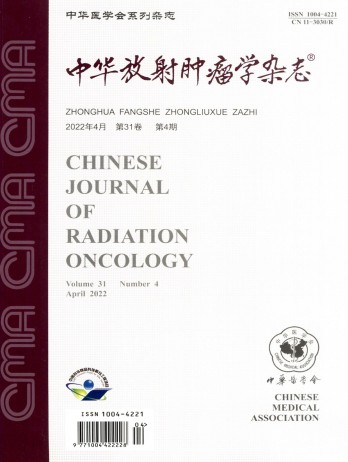基于图像变换的CT图像校正算法在癌症放疗剂量准确度评价中的应用
引用次数: 0
摘要
目的定量评价癌症放疗剂量的准确性。方法提出一种基于图像变换的CT图像校正算法。参照CBCT图像,对癌症放疗方案的CT图像进行校正,得到能够反映治疗实际体位的校正图像。将临床计划移植到校正后的图像中,作为测试计划进行剂量重新计算,并对剂量测定参数进行统计比较,以评估剂量准确性。结果两种造影方案的目标覆盖率均能满足临床要求(>98%),均匀性指数无显著差异(P=0.150)。试验方案的一致性明显低于临床方案(P<0.05)。试验计划中每个危险器官的最大剂量比临床方案高约30cGy(P<0.05),V50略高于临床方案,而平均剂量(Dmean)没有显著差异。结论基于图像变换的CT图像校正算法可以定量评价癌症放疗剂量的准确性,为临床解决类似问题提供参考。关键词:图像转换;图像校正;宫颈肿瘤/放射治疗;剂量准确性本文章由计算机程序翻译,如有差异,请以英文原文为准。
Application of CT image correction algorithm based on image transformation in the evaluation of dose accuracy evaluation during radiotherapy for cervical cancer
Objective
To quantitatively evaluate dose accuracy of radiotherapy for cervical cancer.
Methods
A CT image correction algorithm based on image transformation was proposed. Referring to CBCT images, CT images of radiotherapy plan for cervical cancer were corrected to obtain the corrected images which could reflect the actual body position of treatment. The clinical plan was transplanted to the corrected images for dose recalculation as a test plan, and the dosimetry parameters were statistically compared to evaluate the dose accuracy.
Results
Both of the target coverage of contrast plans could meet the clinical requirements (>98%), and there was no significant difference in the homogeneity index (P=0.150). The conformability of the test plan was significantly worse than that of the clinical plan (P<0.05). The maximum dose of each organ at risk in the test plan was approximately 30 cGy higher than that of the clinical plan (P<0.05), V50 was slightly higher than that of the clinical plan, whereas the average dose (Dmean) did not significantly differ.
Conclusion
The CT image correction algorithm based on image transformation can quantitatively evaluate the dose accuracy of radiotherapy for cervical cancer, which provides reference for resolving similar problems in clinical practice.
Key words:
Image transformation; Image correction; Cervical neoplasm/radiotherapy; Dose accuracy
求助全文
通过发布文献求助,成功后即可免费获取论文全文。
去求助
来源期刊
自引率
0.00%
发文量
6375
期刊介绍:
The Chinese Journal of Radiation Oncology is a national academic journal sponsored by the Chinese Medical Association. It was founded in 1992 and the title was written by Chen Minzhang, the former Minister of Health. Its predecessor was the Chinese Journal of Radiation Oncology, which was founded in 1987. The journal is an authoritative journal in the field of radiation oncology in my country. It focuses on clinical tumor radiotherapy, tumor radiation physics, tumor radiation biology, and thermal therapy. Its main readers are middle and senior clinical doctors and scientific researchers. It is now a monthly journal with a large 16-page format and 80 pages of text. For many years, it has adhered to the principle of combining theory with practice and combining improvement with popularization. It now has columns such as monographs, head and neck tumors (monographs), chest tumors (monographs), abdominal tumors (monographs), physics, technology, biology (monographs), reviews, and investigations and research.

 求助内容:
求助内容: 应助结果提醒方式:
应助结果提醒方式:


